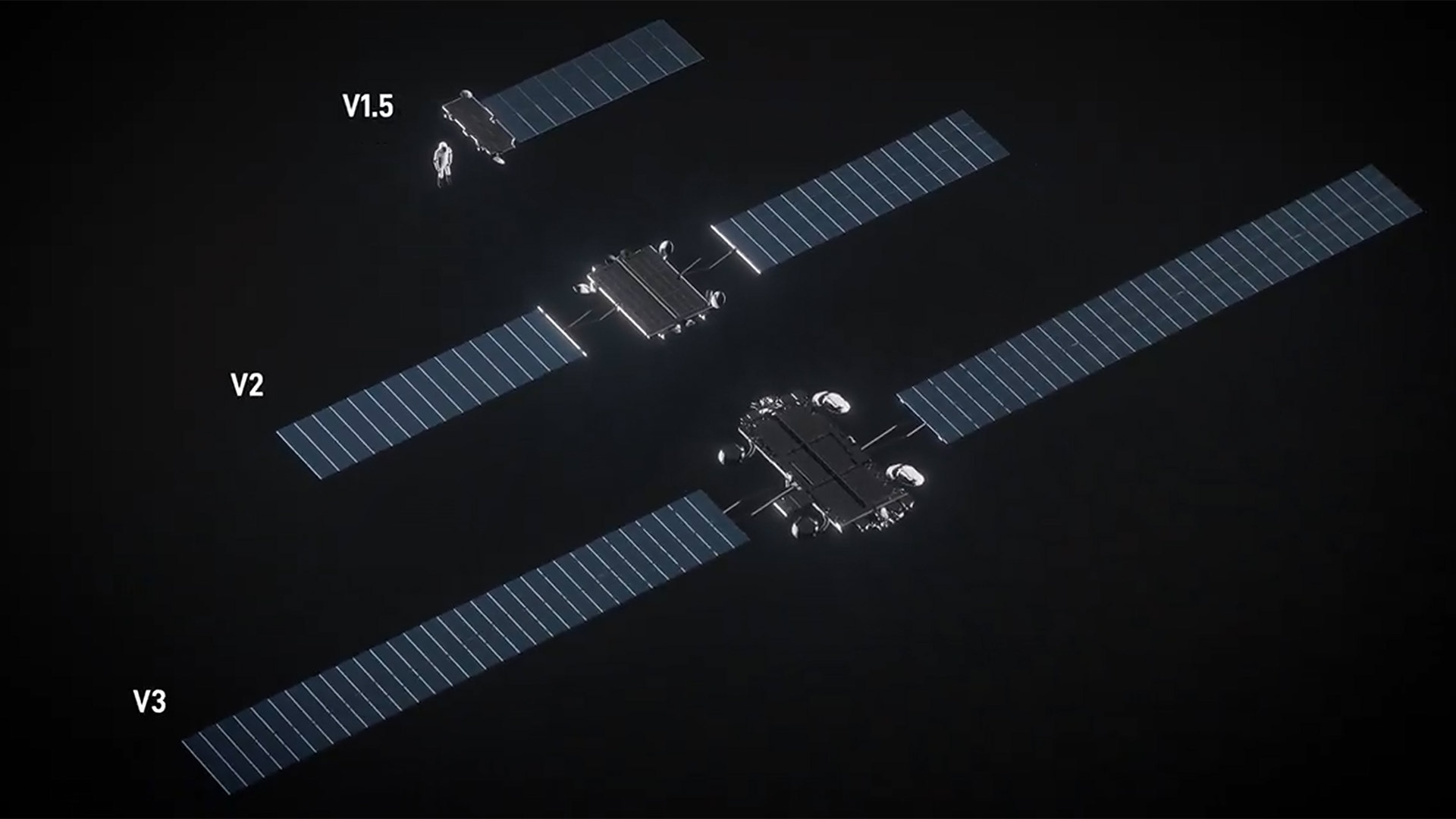SpaceX shows off massive new V3 Starlink satellites — expanded technology will deliver gigabit internet to customers for the first time and enable 60 Tera-bits-per-second downlink capacity
Bigger, heavier, new satellites will be deployed using the reusable Starship vehicle.

SpaceX revealed its new V3 Starlink satellites, which it says will provide gigabit connectivity to users and enable 60 Tera-bits-per-second downlink capacity on the Starlink network. The company says each launch will add 20 times the capacity of its current V2 mini offering.
The larger V3 @Starlink satellites that will deploy from Starship will bring gigabit connectivity to users and are designed to add 60 Tera-bits-per-second of downlink capacity to the Starlink network.That's more than 20 times the capacity added with every V2 Mini launch on… pic.twitter.com/N0Vl9psbm3October 13, 2025
The above animation was first shared by SpaceX on Monday, during a live stream of the 11th flight test of SpaceX’s reusable Starship vehicle, notes PCMag. And now we can see why SpaceX has started to use its more powerful Starship vehicle, in preference over the existing Falcon 9 rocket, which was used for prior generation satellite deployments..
As well as their obviously significantly larger physical form, a V3 satellite is estimated to weigh in at as much as 2,000kg (4,409 pounds). Compare that to the existing V2 Mini satellites, which are less than 600kg, and the V1 satellites at around 300kg.
We’ve established that these V3 Starlink satellites are big and heavy, so what are the network performance gains? SpaceX’s latest social media bulletin regarding the performance of these units is quite brief. However, it highlights that V3 will “bring gigabit connectivity to users and are designed to add 60 Tera-bits-per-second of downlink capacity to the Starlink network.”
Thankfully, there were some prior news releases and filings, which flesh out V3 details. An important one, for example, is that for every upcoming Starship launch, it will be possible to put 60 V3 satellites into orbit. “That's more than 20 times the capacity added with every V2 Mini launch on Falcon 9,” says SpaceX. Moreover, each new V3 satellite boasts 1,000 Gbps of download and 200 Gbps of upload bandwidth, making them better than 10x faster than V2 models.
Starship has successfully deployed our @Starlink simulators pic.twitter.com/muNMalZkbTOctober 13, 2025
With the V3 satellites deploying, probably early next year, we might begin to see SpaceX CEO Elon Musk’s original vision of a global broadband service materialize. The new satellites’ next-gen architecture should deliver the increased coverage and speed to iron out connectivity and capacity wrinkles some users are experiencing with the service, as it stands. However, it has previously been indicated that Starlink users will need new hardware to benefit from the best speeds V3 satellites will enable.
Hopefully, SpaceX is still designing even its latest, biggest, and heaviest satellites to completely burn up upon reentry, at the end of their working lives. With V3, there’s a lot more mass to be combusted on the way down to Earth, and as more satellites head into orbit, space debris — and that debris falling back to earth — remains a growing concern.
Get Tom's Hardware's best news and in-depth reviews, straight to your inbox.

Follow Tom's Hardware on Google News, or add us as a preferred source, to get our latest news, analysis, & reviews in your feeds.

Mark Tyson is a news editor at Tom's Hardware. He enjoys covering the full breadth of PC tech; from business and semiconductor design to products approaching the edge of reason.
-
Shiznizzle This filling of the heavens with things to make money off of has to stop. At least some. Scientists are already stating that things in space are impacting their fields. Soon we wont even be able to see let alone track objects that could hit us. Luckily the Webb telescope is far out in space.Reply